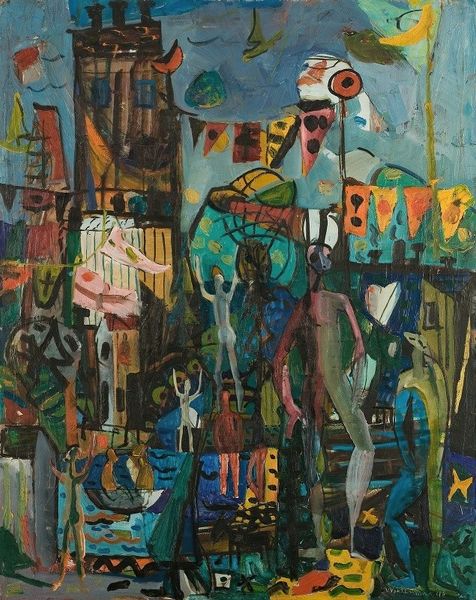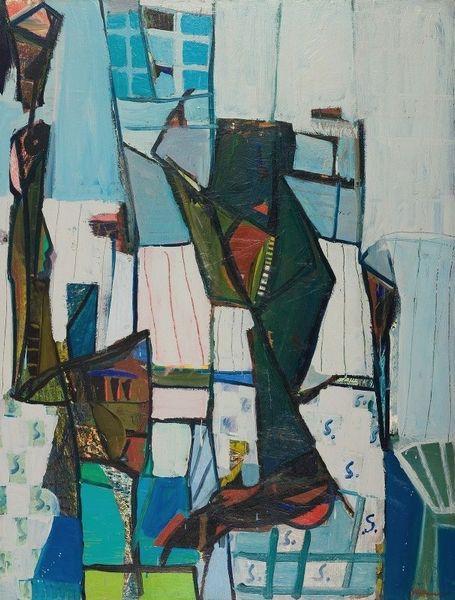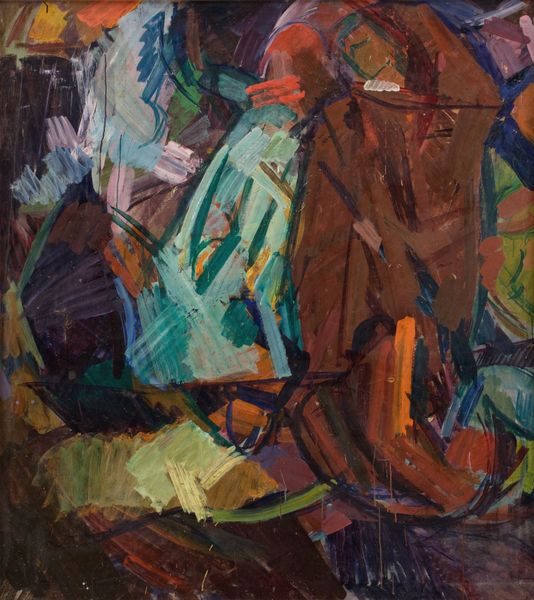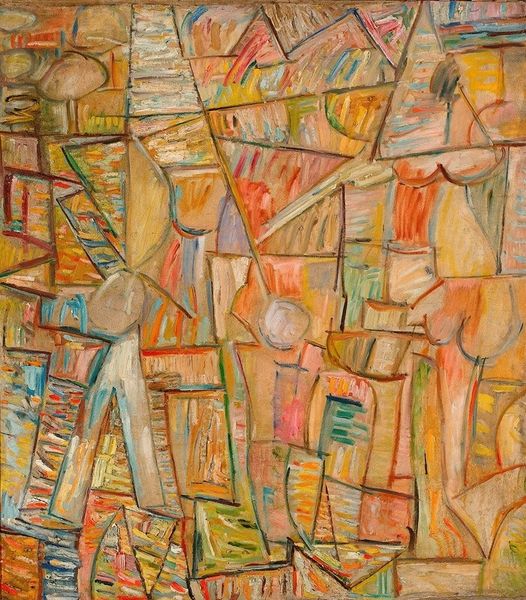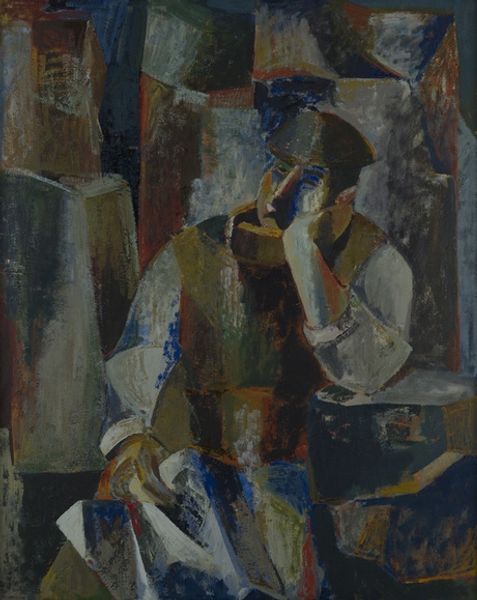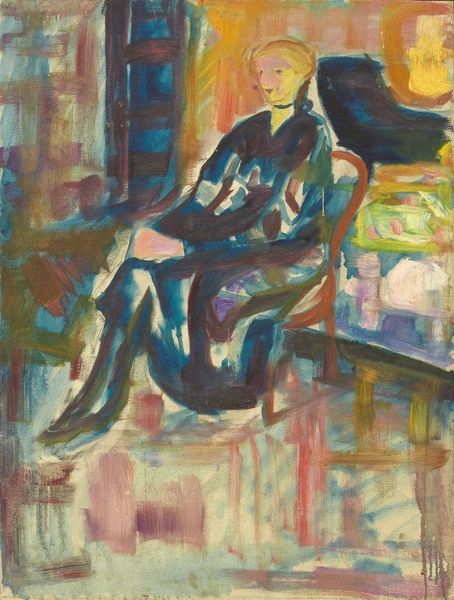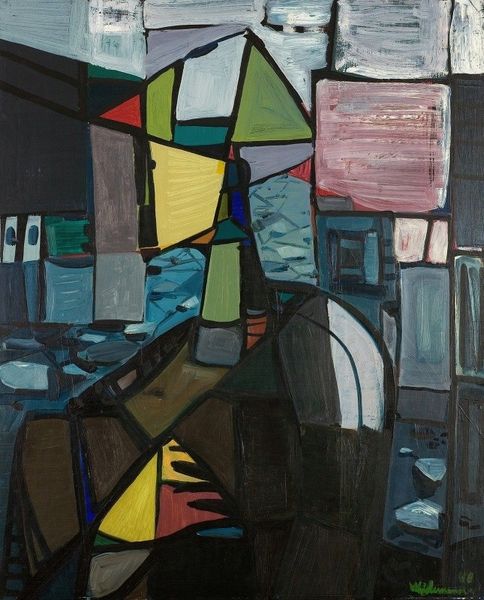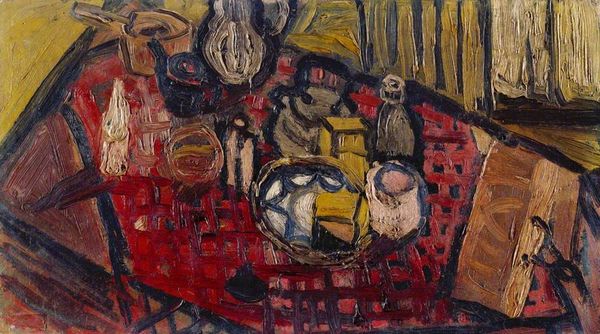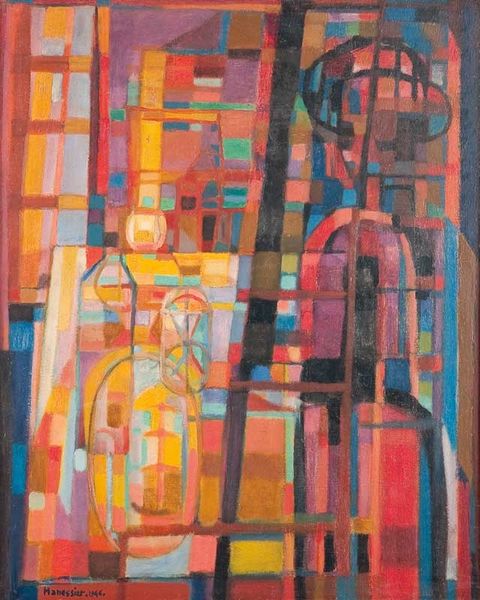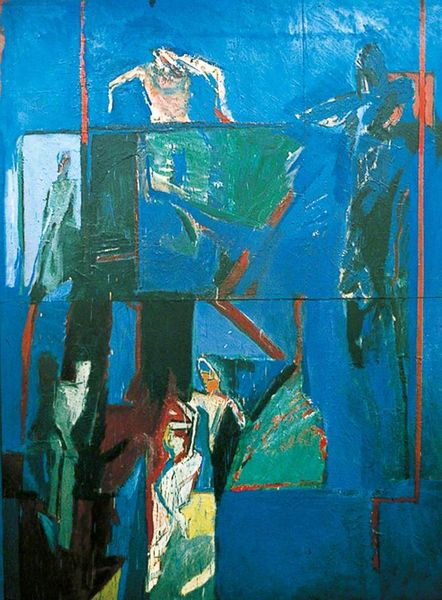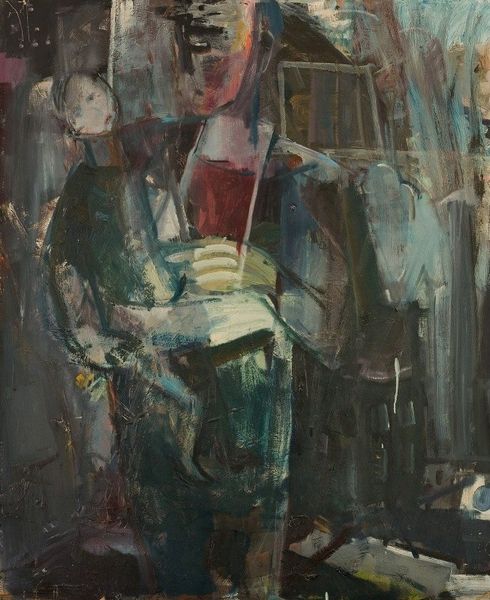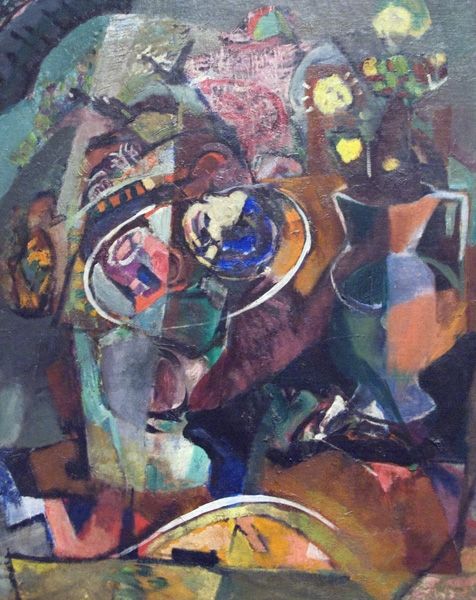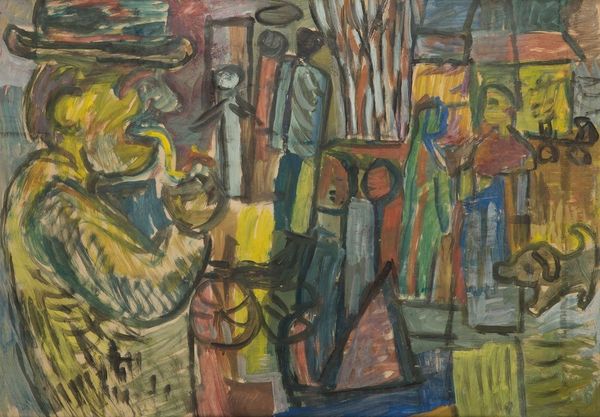
oil-paint
#
abstract-expressionism
#
abstract expressionism
#
oil-paint
#
figuration
Copyright: Public Domain: Artvee
Curator: "Sjømannsenken," or "The Sailor's Widow," painted in 1945 by Jakob Weidemann. It's oil on canvas. It immediately strikes me with a particular gravity and a sense of unresolved grief. Editor: Absolutely. There’s a contained turbulence here. It feels almost like an archaeological dig, layers of sorrow painted over, dug into, rearranged. Does that make any sense? It is so immediate with feelings that feel historical to the touch. Curator: It does. Weidemann's works after the war explore isolation, and I think this painting embodies it with remarkable intensity. See how the figure seems caged within the angular composition? The colors, mostly somber blues and browns, are symbolic, resonating with loss. There is something incredibly vulnerable about it, although that it is hidden away within all those shapes and planes of the abstract impressionist elements. Editor: You’re right. Those blues, especially. It's like peering into a shadowed room where memories cling to the furniture. Yet the white of the dress... almost hopeful? The white against those heavy blues does bring me somewhere with this figure, the woman portrayed in her isolation and her role in the history of this grief and moment, and era. Curator: The "Widow" figure is a recurring motif throughout history. It represents a liminal space, existing between the known world and the unseen. This archetype appears across different cultures; she embodies not only individual sorrow but communal mourning. Editor: Yes, that visual language really transcends specifics. Though the painting seems to depict a lone figure, the emotional resonance widens out, hinting at the shared experience of loss and endurance of a whole era. What seems simple about her at first glance really blossoms outward when she becomes about much more. Curator: I've always been moved by the artist's choice not to resolve the image fully. It creates a kind of open wound, demanding empathy from the viewer. Editor: An open wound is a powerful description. I’d say, too, it's almost hopeful. It leaves space for healing, or at least the beginning of some understanding, within us. Thanks for showing me that—I never thought of it that way before!
Comments
No comments
Be the first to comment and join the conversation on the ultimate creative platform.
